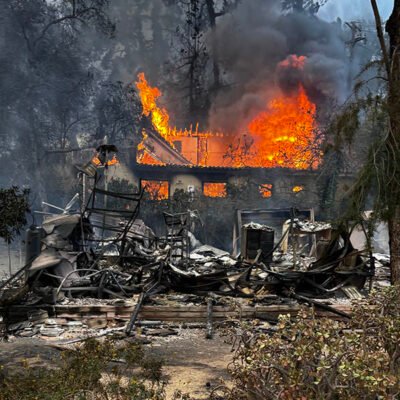Throughout American history, conspiracy theories have played a significant role in shaping public discourse. These theories often arise during times of political uncertainty, social unrest, or national crises, offering alternative explanations to widely accepted events. While some conspiracies stem from genuine concerns, others thrive on misinformation, speculation, and fear. Below, we explore some of the most famous conspiracy theories in U.S. history and their origins.
1. The Assassination of President John F. Kennedy
One of the most enduring conspiracy theories in American history surrounds the assassination of President John F. Kennedy on November 22, 1963. Officially, the Warren Commission concluded that Lee Harvey Oswald acted alone in shooting Kennedy from the Texas School Book Depository in Dallas. However, many Americans have long doubted this explanation, believing that the assassination was the result of a larger conspiracy.
Some of the most popular theories suggest involvement by the CIA, the Mafia, the Soviet Union, or even then-Vice President Lyndon B. Johnson. The sudden murder of Oswald by nightclub owner Jack Ruby—just two days after Kennedy’s death—only deepened public suspicion. Over the decades, declassified documents and further investigations have failed to provide definitive proof of a conspiracy, but the skepticism persists, fueled by inconsistencies in the official reports and theories spread by books, films, and online discussions.
2. The Moon Landing Hoax
In 1969, NASA’s Apollo 11 mission landed astronauts Neil Armstrong and Buzz Aldrin on the Moon. This historic achievement was widely celebrated as a victory for the United States in the Space Race against the Soviet Union. However, some skeptics believe the moon landing was staged, arguing that the U.S. government faked the event to assert dominance over its Cold War rival.
Supporters of the moon landing hoax theory point to perceived inconsistencies in NASA’s footage and photographs. Claims include shadows that appear unnatural, the American flag appearing to “wave” despite the Moon’s lack of atmosphere, and the supposed inability to see stars in the background of space images. Scientists and experts have repeatedly debunked these arguments, explaining them with basic physics and photographic principles. Nevertheless, conspiracy theories about the moon landing remain popular, particularly among those who distrust the government and mainstream media.
3. Area 51 and UFO Cover-Ups
Area 51, a highly classified U.S. Air Force facility in Nevada, has been at the center of UFO-related conspiracy theories for decades. Due to the intense secrecy surrounding the base, many believe it houses alien spacecraft, extraterrestrial bodies, or other top-secret government experiments. The theory gained traction following the 1947 Roswell incident, in which the U.S. military claimed that a “weather balloon” had crashed in New Mexico. Many skeptics believe this was a cover-up for something more extraordinary, such as an alien spacecraft retrieval.
While declassified documents confirm that Area 51 was used for testing advanced aircraft during the Cold War, including the U-2 spy plane, the government’s long history of secrecy has done little to quell speculation. In 2019, an internet campaign called “Storm Area 51” went viral, with thousands joking about raiding the base to “see them aliens.” The event highlighted the enduring public fascination with extraterrestrial life and government secrecy.
4. The 9/11 Conspiracy Theories
The terrorist attacks on September 11, 2001, were a defining moment in modern U.S. history. While the official explanation states that al-Qaeda operatives hijacked four planes, some conspiracy theorists argue that the U.S. government was either complicit in the attacks or allowed them to happen as a pretext for war in the Middle East.
Theories surrounding 9/11 include claims that the Twin Towers collapsed due to controlled demolition rather than the impact of the hijacked planes, that the Pentagon was struck by a missile rather than an airliner, and that key figures in the Bush administration orchestrated the attacks to justify the invasion of Iraq and Afghanistan. Engineers, scientists, and government reports have debunked these claims, but distrust in official narratives and the consequences of post-9/11 policies continue to fuel skepticism.
5. The Illuminati and the New World Order
The Illuminati was originally a secret society founded in Bavaria in 1776, but modern conspiracy theories suggest that a powerful, shadowy group continues to operate today, controlling world events behind the scenes. The idea of a “New World Order” (NWO) ties into this theory, alleging that global elites—often including politicians, bankers, and celebrities—are working to create a totalitarian world government.
Signs supposedly pointing to Illuminati influence include symbols such as the all-seeing eye on the U.S. dollar bill, the use of occult imagery in pop culture, and references in music and film. While no concrete evidence supports the existence of such a group, the theory remains one of the most enduring and widespread conspiracy narratives.
6. The “Deep State”
In recent years, the concept of the “Deep State” has gained prominence, particularly in political discussions. This theory suggests that a hidden network of unelected officials, intelligence agencies, and bureaucrats secretly controls the government, undermining the authority of elected leaders.
Supporters of the Deep State theory claim that government agencies like the CIA, FBI, and State Department operate independently of the president and Congress, pushing their own agendas. The theory has been embraced by some politicians and media figures, particularly in response to allegations of government corruption or perceived interference in political matters. While the term “Deep State” is often used in a partisan context, elements of government secrecy and bureaucratic influence have long been subjects of debate.
Why Conspiracy Theories Persist
Conspiracy theories often emerge during times of social and political uncertainty. When people feel powerless, they may turn to alternative explanations to make sense of complex events. Several key factors contribute to the persistence of conspiracy theories:
- Historical Precedents: Real government cover-ups, such as the Watergate scandal and the Tuskegee syphilis experiment, have made the public more skeptical of official narratives.
- Distrust in Authorities: A lack of transparency and perceived dishonesty from governments, media, and corporations fuels conspiracy thinking.
- The Internet and Social Media: Online platforms allow conspiracy theories to spread rapidly, connecting believers across the globe and amplifying misinformation.
- Psychological Appeal: Many conspiracy theories offer a simple explanation for complex events, reinforcing existing beliefs and biases.
Conclusion
Conspiracy theories have been part of American culture for centuries, shaping public perceptions of historical events. While some theories stem from legitimate concerns, many are based on misinformation or speculation. In an era where information spreads faster than ever, it is crucial to approach conspiracy theories critically, relying on credible sources and evidence-based analysis to separate fact from fiction. Understanding why these theories persist can help foster a more informed and skeptical public, ensuring that history is not rewritten by speculation but understood through verified truth.
More Updates : USA Glory.




